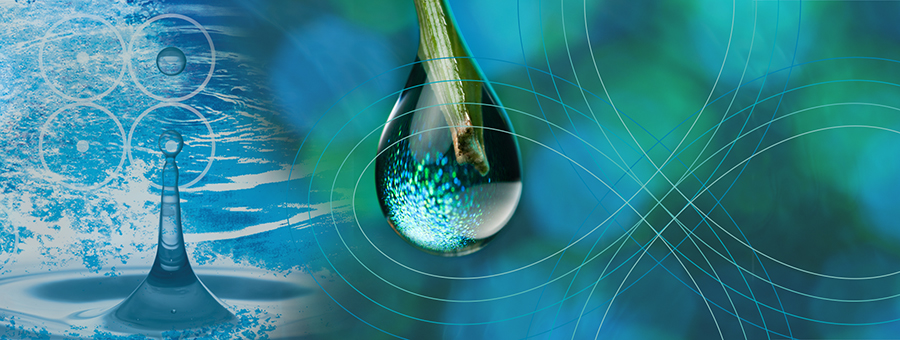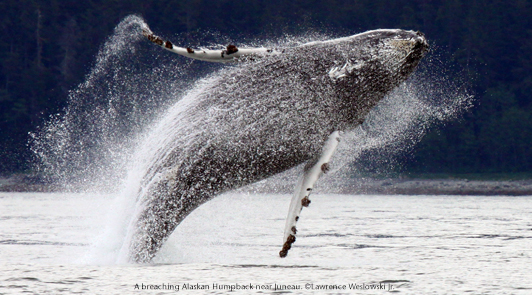Grief Cry is a poetic immersion into mourning and re-emergence into life. Grief is a liminal space of transformation. It’s where sorrow merges with the sacred and grief and grace co-exist in the same moment.
When I originally wrote this reflection in 2020, we were caught in the catastrophe of Covid. As the mega-crises mount across the globe, I’m offering this revised version, suggesting that in reading it we can substitute anything for the resurging pandemic, like wars or natural disasters or humanitarian crises or even a fallen sparrow. The experience of loss is universal and timeless.
.
Granting grief its due
There is a surreal aspect to the very real and raw nature of the Covid pandemic. We didn’t imagine that the tipping point of this Great Transition would come in the form of a virus messenger wearing a crown and bearing gifts.
COVID-19 often affects the lungs, the dark, tender place of grief within us. Given the ubiquitous nature of this ominous illness, there is little left unscathed and so much to mourn. We are all grieving. The devastating loss of loved ones, financial security, freedom, innocence. The list is so long.
Let’s add to it the ignorance we allowed when things were “normal” before, when we believed the illusion of isolation and “othering” as necessary and inevitable for survival. Sheltering in place has only amplified the meta-sickness of separation that humans have long suffered from on earth. Yet we are not alone in our sorrow. The coronavirus recognizes no differences in those it infects as it continues to mutate across species. The planet is grieving too.
The thing about grief is that numbing, suppressing, or avoiding it has paralyzing repercussions. But the inverse is also true, that grief explored and expressed serves as a powerful catalyst. Whole human beings thrive in relationship. When we accept the gifts that emerge from the transitional space between suffering and healing, it begins to dawn us that everything is alive, conscious, interconnected, and one.
What’s inevitable when we embrace the integral nature of the universe? We could answer that profound question from a very personal and intimate place. If we are to be restored to health, wholeness, happiness—and holiness—then we need to find the courage to embrace our woundedness. Water what has become withered and worn within ourselves. Resurrect our deadened awareness.
In this time after the great global pause, we may discover that it is not only our fresh grief that is currently cloaking our hearts but cumulative hurts and traumas that have been our constant and silent companions for a lot of our lives, and often over many, many generations.
Grief is knocking on our door. If we are to remember what being truly alive is, we had better open it.
Crossing that portal of possibilities gives us entrance into a transformative space where we can care, connect, create, and choose a future that’s viable for all beings.
.
Transforming grief into grace
In my life, telling stories and writing poetry have always served as powerful medicine. Perhaps these next two offerings will be a healing balm for you. One is an exquisitely vulnerable story of my personal grief, and the other a poem, Grief Cry, that unifies humans and humpbacks. In both, I transverse between the worlds of life and death.
It was November 19, 1979, and I was in the middle of teaching a design class at Ravensbourne College of Art and Communication in London. Summoned into the office for an urgent phone call from my father, my heart filled with foreboding. He spoke in a strangely stilted way, saying that my beloved sister Denise had been hit by a pickup truck while riding her bike home at dusk. She died in the arms of an off duty fireman at barely 22 years old.
Having an experience of losing someone I loved, one who was so close to me, and so young and vibrant, having her suddenly disappear is still unfathomable. I’ve struggled to make meaning out of it all my life. Initially, it was especially painful because I was going home in two weeks for Thanksgiving after so long away. Returning to the heartland of my family in the small farming town of Zelienople, PA, I could not accept that my sister would now be buried in the town cemetery on the hill where generations of our grandparents had been laid to rest before her.
My agony came in waves, the first a tsunami sweeping me away from familiar shores into a depth of despair so dark that I had to cry out or perish.
I walked around and around the edge of the fallow field in the gloaming of my grief, keening so full of woe that even the deer in the nearby forest must have raised their heads to listen to the strange sounds of my heart breaking wide open. Finally exhausted, I fell quiet looking at the moon, my tears falling like frozen crystals in the bitter cold night air, shattering upon the frozen ground with a tiny tinkling.
On the night before Denise’s funeral, our youngest sister Kathy said to me, “Lauralee, Denise was a social worker. I’m a nurse. You’re a designer. How do you help people by doing that?” I remember exactly where I was standing and exactly what the cold floor felt like under my bare feet. I didn’t have an answer. I remember trying to respond. I remember saying things like, well, I design brands and… I don’t know, whatever I stuttered, it made no sense to her or to me.
That was the first time that a question formed into what has become a center point of my life and what we do at the Sea Change Design Institute. That is, to begin with an intention in the form of a jaw-dropping question that invites miraculous answers. I turned my sister’s senseless death into a celebration by answering the deeper question that Kathy had innocently asked me: “How can design serve life?”
.
.
Grief Cry
Cast your grief cry over
the ragged cliff edge
as rough as the tear in you.
Fling it far out and watch it
wing through the air—
and pierce the water below.
Falling deep deeper down
where the whales dive for krill.
Down where no light reaches
and bioluminescence pulses
in bejeweled life forms
signaling marine Morse code.
Down here in the dark silence
your soul can find peace
where the whale falls rest
on the ocean floor.
The slow, mesmerizing
movement of the watery womb
will rock you, rock you
as you weep salt tears
by the bone graveyard.
In whatever time it takes
you will relinquish your grief
and long for the living.
Launch yourself up into light.
Let your soul breach the surface
as the humpback whales do.
Send your heart-shaped plume
of blessed breath out into the world.
.
The gyre of grief
If letting this poem work its meaning into your life is something you would like to do on your own, then with deep respect follow your heart into wholeness. If you would like me to translate it for you from my ensouled perspective, then please read on.
Cast your grief cry over
the ragged cliff edge
as rough as the tear in you.
Fling it far out and watch it
wing through the air—
and pierce the water below.
Grieving is unique to each one of us, yet its piercing sound is universally familiar. As ancient as ancestral cliffs, mourning is held sacred in eons-old cultural and spiritual traditions, yet it is so startling when we give voice to the tender tear in the fabric of ourselves. A parallel of a newborn’s cry as breath first enters its lungs, our grief cry echoes the last, ragged breath of a loved one exhaling life. Originating from deep within us, it insists on being acknowledged and expressed. Until we claim it in our own voice and give it permission to erupt—flinging it far out and watching it wing through the air—we can not heal. No matter if we utter guttural moans or shrill shrieks, keening or wailing or sobbing softly, grief must be given up.
Falling deep deeper down
where the whales dive for krill.
Down where no light reaches
and bioluminescence pulses
in bejeweled life forms
signaling marine Morse code.
What happens when we immerse ourselves in our woundedness? Vulnerable. Unconsolable. Bereft. In a free fall of surrender, we submerge like baleen whales seeking krill and plankton. For us, the sustenance we seek is not found in the light-filled surface waters. There is nothing superficial about grief. Diving deeper still below the surreality of the twilight zone (as our lives seem to have literally become) we perceive the Morse code of bioluminescent beings in the midnight of our mourning. We begin to decipher the hidden signals of what was once precious and beautiful and now irreplaceable in our lives. Moments. Memories. Meaning.
Down here in the dark silence
your soul can find peace
where the whale falls rest
on the ocean floor.
The slow, mesmerizing
movement of the watery womb
will rock you, rock you
as you weep salt tears
by the bone graveyard.
In the darkest waters of our deepest selves there is a liminal space where our souls commune with the sacred. Here in the unknowable recesses of the abyss is where we come to find consolation amid the whale carcasses. In the truth-telling we offer up our profound anguish, unnamed regrets, withheld forgivenesses, all of it and more until we are broken down to bones in our graveyard of grief. No more mortal. Now nothing but nutrients, we merge with the great cosmic ecosystem. In the stillness, our ocean mother comforts us rocking, rocking us within her womb.
In whatever time it takes
you will relinquish your grief
and long for the living.
Launch yourself up into light.
Let your soul breach the surface
as the humpback whales do.
Send your heart-shaped plume
of blessed breath out into the world.
As with all in this glorious cycle of life, rebirth beckons us. Irresistible, we hear its spellbinding song dispelling our sorrow, lifting us in our longing. Restored, we find ourselves bestowed with the same power commanded by the magnificent denizens of the deep. We launch effortlessly up into the land of the living. We re-emerge as our true selves remembering this incarnation is ours for the making. Joyfully we send our blessed breath out into the world, our love blessing our losses.
Grief transforms into grace.
.
_______
The wisdom I have gleaned about healing grief has been growing over decades of Sea Change Design coaching and consulting with clients who were courageous enough to trust my guidance, and more importantly their own hearts in exploring the deep waters of their lives and organizations. I send out a great plume of gratitude to them.
The Grief Cry poem and short film have been published on Poetry and Covid, a UK Arts and Humanities Research Council project sparking global connection through the sharing of pandemic poetry. It has also been screened at a NextNow event: POW! (Power Our World) Forum.





hello[at]seachangedesign.com
+1.831.426.8026
Sea Change Design Institute
317 Arroyo Seco
Santa Cruz CA
95060 USA